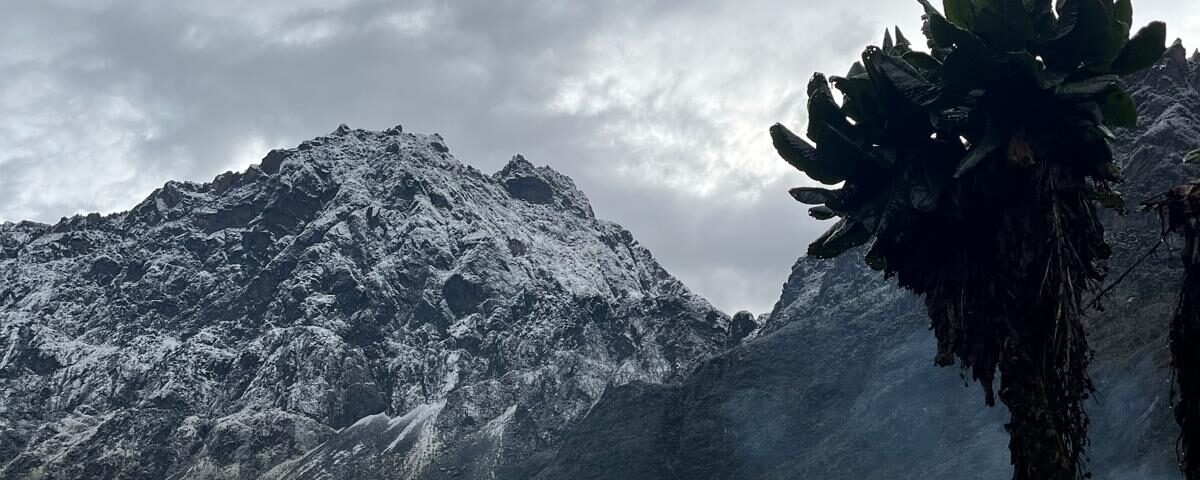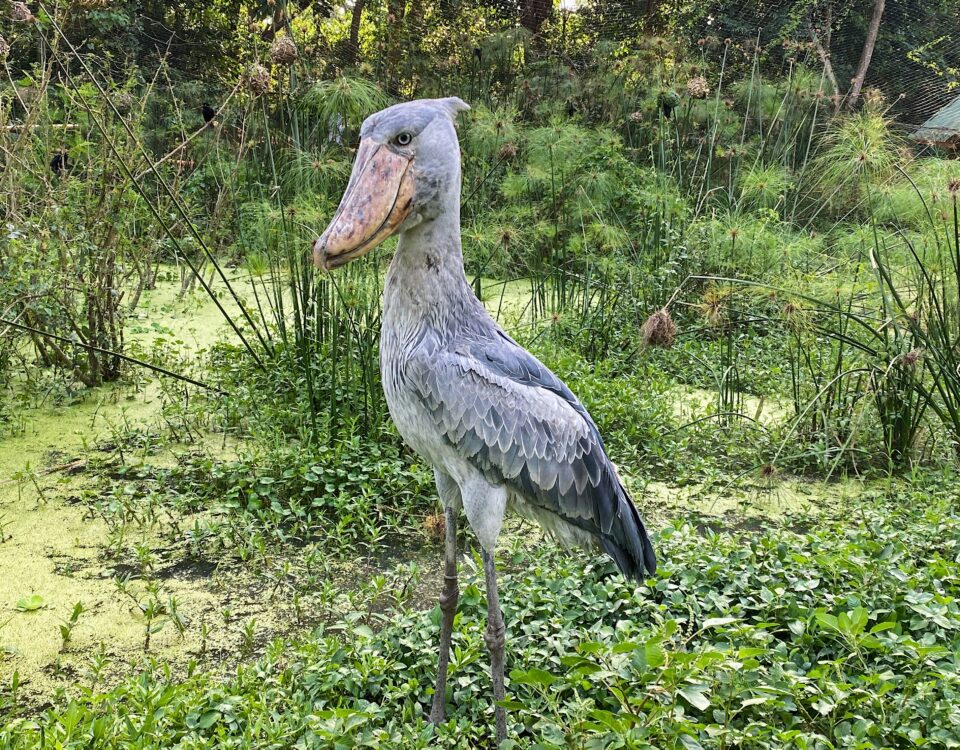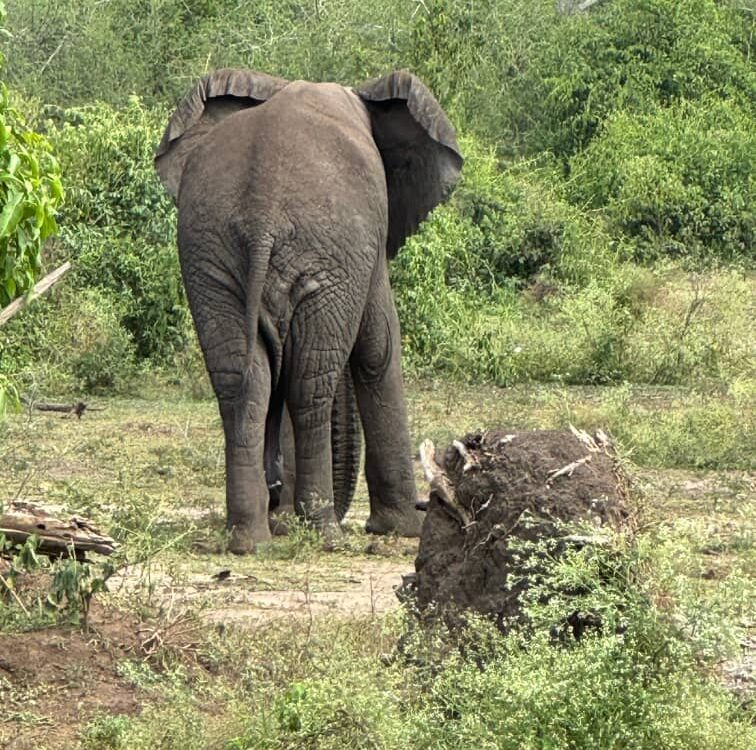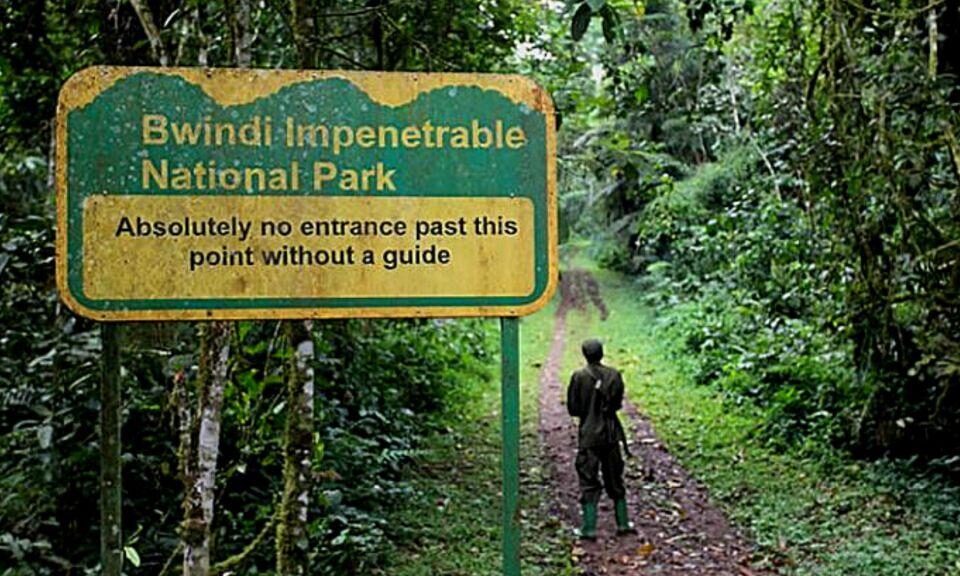
Which park has tree-climbing lions in Uganda?
October 6, 2025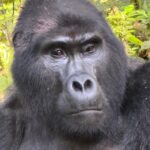
Tips to Book a Budget Gorilla Safari in Uganda
October 17, 2025Hiking Mount Rwenzori in October
A Guide to Hiking Mount Rwenzori in October. Mount Rwenzori, often referred to as the “Mountains of the Moon,” is one of Africa’s most captivating and demanding trekking destinations. Located along the border between Uganda and the Democratic Republic of Congo, this magnificent mountain range is celebrated for its breathtaking landscapes, distinctive biodiversity, and the adventurous experience it provides to hikers. Venturing to hike Mount Rwenzori in October presents a unique opportunity to appreciate its natural splendour, the challenges it poses, and its rich cultural heritage.
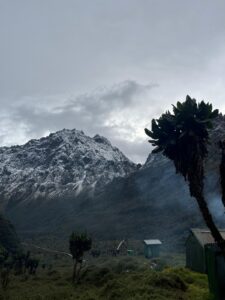
How high is Mount Rwenzori?
Mount Rwenzori is the third-highest mountain range in Africa. Its highest peak, Margherita, reaches an elevation of 5,109 meters (16,763 feet). The range is characterized by its dramatic scenery, which includes jagged peaks, lush forests, and alpine meadows. The Rwenzori Mountains are recognized as a UNESCO World Heritage Site due to their rich biodiversity. This includes unique plant species, endemic animals, and a variety of ecosystems ranging from tropical rainforest to alpine vegetation.
What is the Climate and Weather of Mount Rwenzori like in October?
October falls within the wet season in the Rwenzori region. This means hikers can expect variable weather conditions. Rain is common, often arriving unexpectedly. But it can also lead to spectacular views, with the mist clearing to reveal stunning landscapes. Temperatures can range from cool to chilly, especially at higher altitudes. Therefore, hikers need to pack appropriately. The wet season also has its advantages. The lush vegetation is at its most vibrant, creating a stunning contrast against the rocky peaks. Wildlife is often more active during this time, and the waterfalls cascading down the mountainsides are particularly impressive.
Preparing for Mount Rwenzori Hike in October
Physical Preparation
Hiking Mount Rwenzori is not for the faint-hearted. It demands a good level of physical fitness and stamina. Before embarking on your journey, it is recommended to engage in a training regimen that includes cardiovascular exercises, strength training, and hiking practice. Aim to hike regularly in the months leading up to your trip, gradually increasing your distance and elevation gain. This preparation will help your body acclimatize to the physical demands of hiking at high altitudes.
Gear and Equipment
Packing the right gear is crucial for a successful hike. Here’s a checklist of essential items for hiking Mount Rwenzori in October:
Clothing: Layering is key. Pack moisture-wicking base layers, insulating mid-layers (like fleece), and a waterproof and windproof outer layer. Don’t forget warm gloves, a hat, and a buff or scarf.
Footwear: Sturdy, waterproof hiking boots with good ankle support and traction are essential. Make sure to break them in before the hike.
Camping Gear: If you’re camping, bring a lightweight tent, a sleeping bag rated for cold temperatures, and a sleeping pad for insulation.
Cooking Equipment: A portable stove, cooking utensils, and lightweight cookware will be necessary for preparing meals on the trail.
Navigation Tools: A map, compass, and GPS device can help you stay on track in unpredictable weather.
Safety Gear: A first-aid kit, headlamp, and multi-tool should be included for emergencies.
Permits and Guides
Hiking Mount Rwenzori requires permits, which can be obtained through local tour operators. It is highly recommended to hire a local guide who is familiar with the terrain and can offer invaluable insights into the local flora, fauna, and culture. Guides also enhance safety, helping navigate the challenging trails and ensuring a smoother experience.
What is the Rwenzori Hiking Experience like?
Day 1: Arrival and Acclimatization
Most hikers begin their journey in the town of Kasese, where they can organize their climb and meet their guides. After arriving, take some time to acclimatize to the altitude and prepare for the adventure ahead. Enjoy the local cuisine and mingle with the friendly residents of Kasese, who are eager to share their culture.
Day 2: Nyakalengija to Nyabitaba Hut
The trek officially begins at Nyakalengija, the starting point for most hikes. The trail leads through lush montane forests. Here, you may spot various bird species, monkeys, and unique plants such as giant lobelias and senecios. The hike to Nyabitaba Hut (2,651 meters / 8,700 feet) takes about 5-7 hours, depending on your pace and the weather conditions.
As you ascend, the landscape transforms from dense forest to open grassland, providing breathtaking views of the surrounding peaks. Upon reaching Nyabitaba Hut, hikers can rest and enjoy the serene mountain atmosphere.
Day 3: Nyabitaba to John Matte Hut
From Nyabitaba, the trail continues to John Matte Hut (3,414 meters / 11,200 feet). The journey takes approximately 6-8 hours and involves navigating through the beautiful but challenging terrain of the Rwenzori. Hikers must traverse rocky paths, cross rivers, and navigate through boggy areas.
The stunning views of the Rwenzori glacier and the surrounding valleys make the effort worthwhile. Along the way, take the time to appreciate the diverse plant life, including giant groundsels and moss-covered trees.
Day 4: John Matte to Bujuku Hut
The trek from John Matte to Bujuku Hut (3,962 meters / 13,000 feet) is often considered one of the most challenging sections. This leg takes about 6-7 hours and includes steep ascents and descents, as well as navigating through swampy areas. Bujuku Hut is situated near the beautiful Bujuku Lake, surrounded by towering peaks and glaciers. The stunning scenery provides a perfect backdrop for relaxation after a long day of hiking.
Day 5: Bujuku to Elena Hut
The next leg of the journey leads to Elena Hut (4,540 meters / 14,800 feet), located near the base of Margherita Peak. This section takes approximately 5-6 hours and involves scrambling over rocks and navigating challenging terrain.
As you ascend, the air becomes thinner, making it essential to stay hydrated and pace yourself. The views from the trail are breathtaking, with glaciers and rocky outcrops creating a dramatic landscape.
Day 6: Summit Attempt and Descent
The final push to Margherita Peak begins early in the morning. The ascent takes about 4-6 hours, depending on weather conditions and the group’s pace. The trail involves steep climbs and may require some technical skills, including using ropes and harnesses.
Reaching Margherita Peak is an exhilarating experience, offering panoramic views of the surrounding ranges and valleys. After taking in the breathtaking sights and capturing photos, the descent begins, which can be equally challenging. Hiking back to Bujuku Hut for the night allows for a well-deserved rest before continuing the descent to lower huts.
Day 7: Descent to Nyakalengija
The final day involves a long descent back to Nyakalengija, taking approximately 6-8 hours. As you make your way down, reflect on the incredible journey you’ve undertaken, the challenges overcome, and the beauty of the Rwenzori Mountains. Upon returning to Nyakalengija, you can celebrate your accomplishment with your guides and fellow hikers. Consider spending an extra day in the area to relax and explore, or visit nearby attractions such as the local hot springs or cultural sites.
Cultural Insights and Local Communities
Hiking Mount Rwenzori is not just about the physical challenge; it’s also an opportunity to connect with local communities. The Bakonzo people, who inhabit the foothills of the Rwenzori, have a rich cultural heritage and are known for their hospitality. Engaging with the locals can enhance your experience, providing insights into their traditions, crafts, and way of life.
Many trekkers also choose to visit local markets or participate in cultural exchanges, learning traditional dances or cooking methods. Such interactions enrich the hiking experience and foster mutual respect and understanding.
Book with us now and conquer Mount Rwenzori.
Hiking Mount Rwenzori in October is an unforgettable adventure that combines physical challenge, breathtaking scenery, and cultural experiences. The lush landscapes, unique biodiversity, and the thrill of reaching the summit of Margherita Peak make this journey worthwhile for any outdoor enthusiast.
As with any adventure, preparation is key. Being physically fit, having the right gear, and understanding the local culture will ensure a rewarding experience. Whether you’re a seasoned hiker or a novice adventurer, the Rwenzori Mountains promise an experience of a lifetime, offering both challenge and beauty in equal measure. So lace up your boots, pack your gear, and get ready to embark on an extraordinary journey through one of Africa’s most stunning landscapes.

